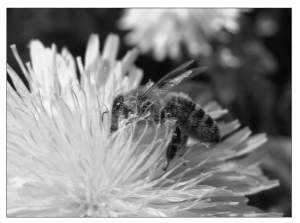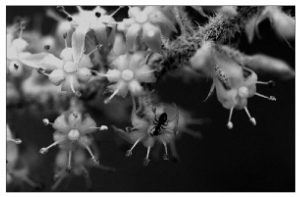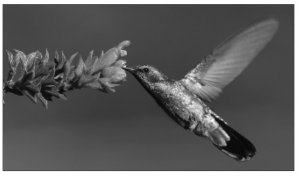Types of pollination
Pollination is the process of transferring pollen grains from the stamens to the ovaries. The pollination process is an interchange between the flower and the agent. The process of pollination is important in agriculture, as fruit is a product of fertilisation resulting from pollination.
The pollen grains produced by the male gametes and the ovules carried by the female gametes are produced by different structures. Therefore, in order to unite the gametes, the pollen must be transferred to the stigma. The transfer and deposition of pollen grains from the anther to the surface of the flower stigma is called pollination.
Pollination are of two types:
- Self pollination.
- Cross pollination.
1.Self pollination : Self-pollination occurs when the pollen of one flower pollinates the same flower or other flowers of the same individual. Self-pollination is a form of pollination that can occur when the flower has both male and female gametes, i.e. stamens and carp or pistil. The mechanism of self-pollination is seen on some legumes, such as peanuts, soya beans. Most self-pollinated plants have small, inconspicuous flowers. These flowers spill pollen directly onto the stigma even before the bud blossoms. Plants that follow the process of self-pollination often have the same length of stamens and carpels.
Plants pollinate and can produce offspring that are self-fertile.
1. Autogamy: Autogamy is the type of self-pollination where the pollen is transferred to the stigma of the same flower.
2. Geitonogamy: This is a process when the pollen is transferred to another flower in the same plant.
Self-pollinating fruit trees are apricots, figs, few varieties of peaches, some varieties of plums such as stanley, green gauge, Italian prune and some varieties of apple are self-pollinating.
Self-pollinating flowers are rose (rosa spp.), food crops such as beans, tomatoes, orchids, violets, sweet peas, also self-pollinated.
Advantages and disadvantages of self pollination
Advantages of self pollination.
1. A self-pollinating plant spends less energy on the production of pollinator attractants.
2. They may grow in areas where organisms that may help pollination, such as insects and other animals, may be absent or very scarce, such as in Arctic regions or high-altitude regions.
3. Self-pollination allows plants to spread beyond the range of appropriate pollinators or to produce offspring in regions where the pollinator population is reduced or naturally variable.
4. There is less chance of a pollination failure and therefore help to maintain the purity of the race.
Disadvantages of self pollination.
1. New species are not produced due to self-pollination.
2. Progeny shows less vigour due to continuous self-pollination.
3. No new characters have been introduced.
4. Characters that are undesirable can not be removed.
5. The capacity to resist diseases is reduced.
6. Self-pollination does not contribute to evolution.
2. Cross pollination
Cross-pollination is also known as allogamy. Cross pollination occurs when pollen grains are transferred from another plant to a flower. Plants that undergo cross-pollination often have higher stamens than their carpels. They use mechanisms to ensure that pollen grains are spread to other plant flowers. The cross-pollination process involves the use of abiotic or biotic agents such as wind , water, insects , birds, bats, snails and other animals as pollinators.

Abiotic pollination
Abitoic pollination is a process where the pollination is carried out without the involvement of other organisms. About only 10% of plants are pollinated without animal agents.
Anemophily
Anempophily is the most common form of abiotic pollination, it is pollination by wind. The flowers that are pollinated by wind show the following characters:
- They are usually unisexual flowers.
- Stamens are exposed freely with versatile anthers.
- The pollen grains are light, smooth, dry and not easily wetted by rain.
- Pollen are produced in enormous quantities.
- The stigma is large and well exposed to receive the pollen grains.
- The flowers are small, inconspicuous with no colour, odour or nectar.
Examples of wind pollinated plants are: coconut, palm, maize, grasses, etc.
Hydrophily
Hydrophily is a pollination by water and occurs in aquatic plants as pollen is released directly into the surrounding water medium. Not all aquatic plants are pollinated by water, most of them have flowers above the surface of the water and are pollinated by wind or insects.
Biotic pollination
Biotic pollination is a pollination process that requires pollinators, such as some organisms, to transfer pollen grain from the anther to the receptive part or stigma of the carp or pistil.
Entimophily or insect pollination
Entimophily is the pollination of insects. This process of pollination occurs in plants with coloured petals and a strong odour to attract insects such as bees, wasps and some ants, beetles, moths and butterflies. Insects visit flowers to collect nectar, edible pollen, and during this visit, pollen grains are dusted on the body. When the insect visits the other flower, the body brushes against the stigma and transfers the pollen to cause pollination. Examples are roses, poppies, etc.
Some of the features seen in pollinated insect flowers are:
1. The flowers are large and brightly coloured.
2. Usually the flowers have a pleasant fragrance and a sweet nectar.
3. Pollen grains are usually rough and sticky, with spiny outgrowths.

Zoophily
It is pollination by vertebrates such as birds and bats. Plants that are pollinated by bats and moths usually have white petals and a strong scent. Plants that are pollinated by birds usually develop red petals and rarely have any smell. Examples are arctium (burdock), acaena and gallium aparine species.
Other pollination
Ornithophily or bird pollination
Humming birds, sun birds and honey eaters are common bird pollinators. Birds get nectar from the flowers. Flowers that are pollinated by birds have funnel-shaped or tubular corollas and are brightly coloured. The floral parts of these plants are leathery and produce large amounts of nectar and pollen which are sticky.

Chiroperophily or bat pollination
Pollination by bats is taking place in the tropics. Bats visit flowers that are large and emit a strong smell. Flowers pollinated with bats produce more nectar and have a large number of stamens.
Anthropophily
Anthropophily is pollination performed by humans, it is usually artificial pollination used in hybridisation techniques.
Open pollination
Open pollination is pollination by insects , birds, wind or other natural mechanisms. Open pollination ensures that all seeds of the crop are derived from parents with known traits and desired traits. In open pollination, breeding is uncontrolled and the pollen source is unknown and may result in a variety of plants that may vary widely in genetic traits. Open pollen can increase biodiversity. The greater challenge in open pollination is to maintain the strain by avoiding pollination by introducing pollen from other strains. Examples of open pollination plants are heirloom tomatoes.
Cleistogamy
1. Cleistogamy is also known as automatic self-pollination, which describes the trait of a certain flowering plant where the plants propagate using non-open, self-pollinating flowers.
2. Cleistogamy is seen in peanuts, peas and beans and is also seen in the grass family.
3. Cleistogmay requires less plant resources as the development of petals, nectar and large amounts of pollen are not required.
4. This makes cleistogamy useful for the production of seeds in unfavourable sites or in adverse conditions.
5. The disadvantage of cleistogamy is that self-fertilization may suppress the creation of genetically improved plants. Examples of cleistonagamy plants are peas, beans, rape plants, and some grasses.
Chasmogamy
1. Chasmogamy is a botanical description of the type of flower.
2. The flower, which is chasmogamous, opens at maturity, exposing stamens and style to allow the fertilisation process.
3. The process of fertilisation in chasmogamous flowers depends on the reception of the appropriate pollen, but often fails.
4. The structure of the chasmogamous flowers is usually optimised to favour the reception of pollen and is generally large and has nectar guides to facilitate insect pollination.
5. These flowers produce nectar and are also scented to attract pollinating organisms.
6. This mechanism of chasmogamy enhances the exchange of genes between individuals. Examples of chansmogamy plants include hibiscus, viola, oxalis, etc.
REFERENCES:
RELATED POST:
